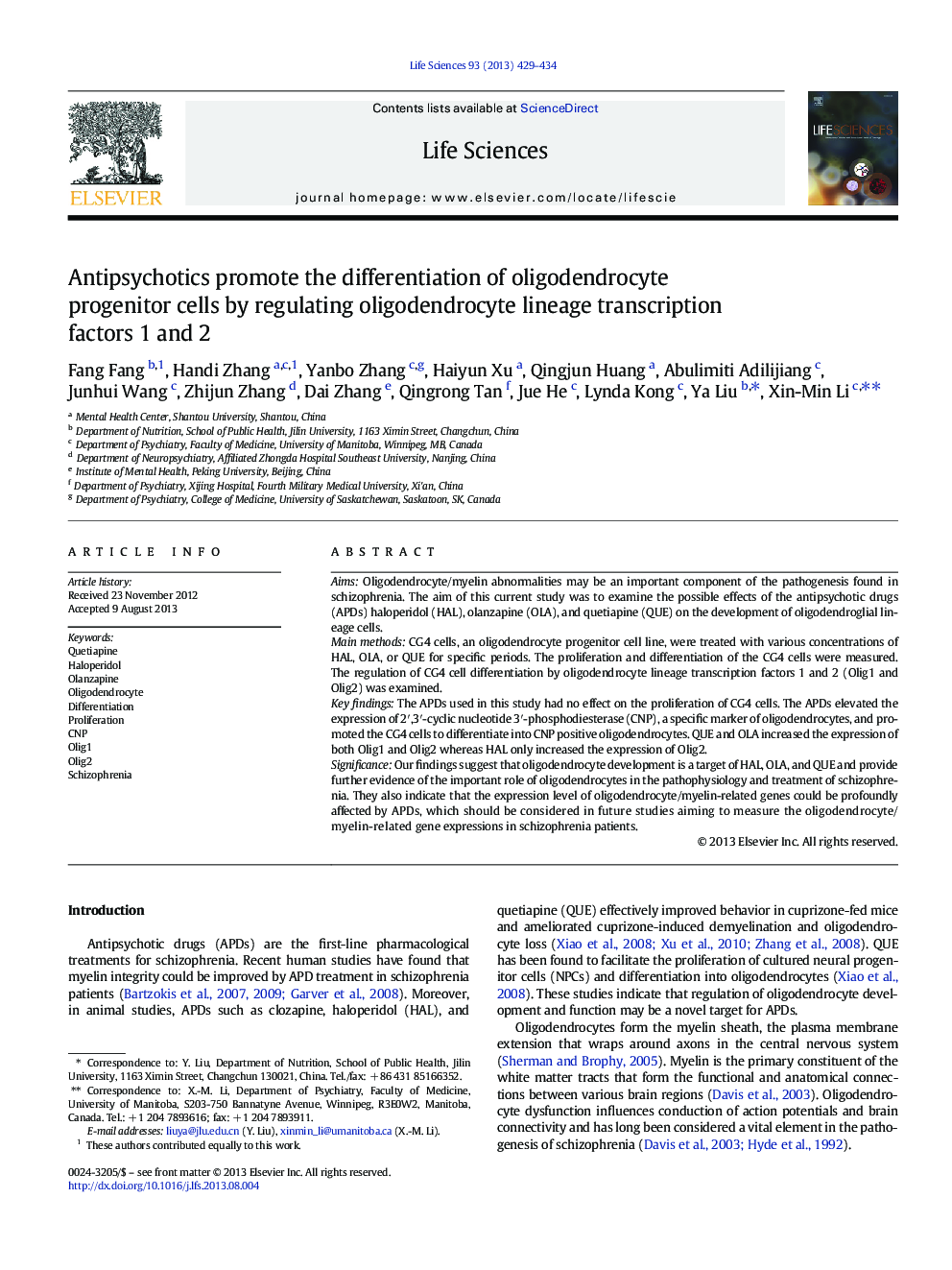| Article ID | Journal | Published Year | Pages | File Type |
|---|---|---|---|---|
| 2551530 | Life Sciences | 2013 | 6 Pages |
AimsOligodendrocyte/myelin abnormalities may be an important component of the pathogenesis found in schizophrenia. The aim of this current study was to examine the possible effects of the antipsychotic drugs (APDs) haloperidol (HAL), olanzapine (OLA), and quetiapine (QUE) on the development of oligodendroglial lineage cells.Main methodsCG4 cells, an oligodendrocyte progenitor cell line, were treated with various concentrations of HAL, OLA, or QUE for specific periods. The proliferation and differentiation of the CG4 cells were measured. The regulation of CG4 cell differentiation by oligodendrocyte lineage transcription factors 1 and 2 (Olig1 and Olig2) was examined.Key findingsThe APDs used in this study had no effect on the proliferation of CG4 cells. The APDs elevated the expression of 2′,3′-cyclic nucleotide 3′-phosphodiesterase (CNP), a specific marker of oligodendrocytes, and promoted the CG4 cells to differentiate into CNP positive oligodendrocytes. QUE and OLA increased the expression of both Olig1 and Olig2 whereas HAL only increased the expression of Olig2.SignificanceOur findings suggest that oligodendrocyte development is a target of HAL, OLA, and QUE and provide further evidence of the important role of oligodendrocytes in the pathophysiology and treatment of schizophrenia. They also indicate that the expression level of oligodendrocyte/myelin-related genes could be profoundly affected by APDs, which should be considered in future studies aiming to measure the oligodendrocyte/myelin-related gene expressions in schizophrenia patients.
